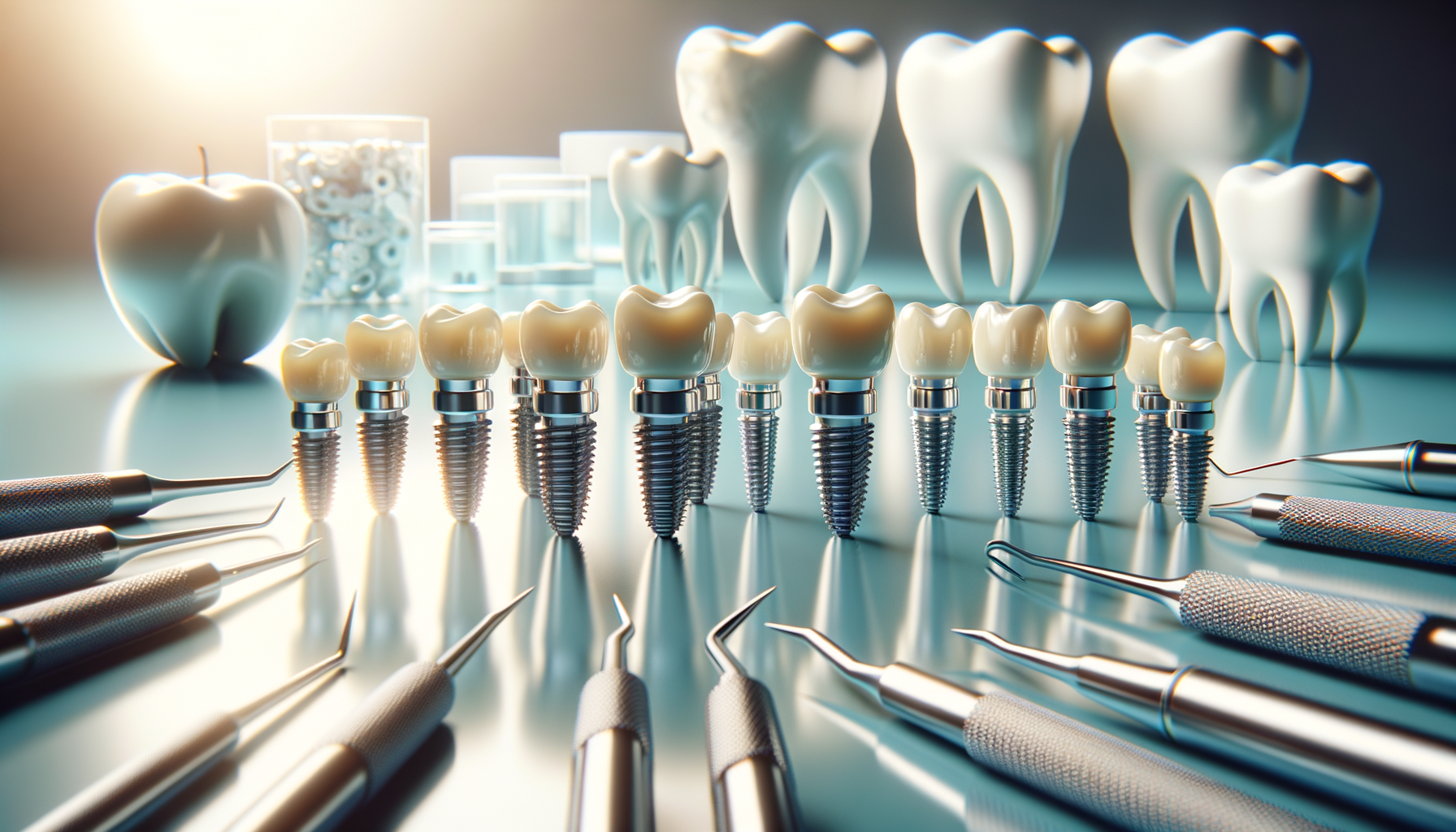Understanding Dental Implants
Dental implants have become a popular choice for those seeking to replace missing teeth, thanks to their durability and natural appearance. Essentially, a dental implant is a titanium post that is surgically placed into the jawbone, serving as a sturdy foundation for a replacement tooth or bridge. This method stands out because it mimics the function of a natural tooth root, which helps maintain the jawbone’s integrity and prevents bone loss—a common issue with traditional dentures.
One of the key benefits of dental implants is their ability to restore full chewing power, allowing individuals to eat their favorite foods without worry. Additionally, implants do not require the alteration of adjacent teeth, unlike some bridgework, preserving the health of surrounding teeth. The success rate of implants is also notably high, with studies showing a success rate of over 95% in healthy individuals, making them a reliable long-term solution.
For those considering dental implants, it’s important to consult with a dental professional to assess suitability, as factors such as bone density and overall oral health can influence the outcome. With proper care, dental implants can last a lifetime, making them a worthwhile investment in one’s oral health.
The Procedure: What to Expect
The process of getting dental implants involves several stages, each crucial to ensuring the implant’s success and longevity. Initially, a comprehensive evaluation is conducted, including X-rays and possibly 3D imaging, to plan the placement of the implant. This step is vital for determining the exact position and angle of the implant to maximize stability and function.
The surgical procedure itself is typically performed under local anesthesia. During the surgery, the dentist or oral surgeon makes an incision in the gum to expose the bone and then drills a hole to place the titanium post. After placement, the gum is stitched back, and a period of healing follows, allowing the implant to integrate with the bone—a process known as osseointegration. This phase can take several months, but it is essential for the implant’s stability.
Once osseointegration is complete, an abutment is attached to the implant, which will hold the new tooth. Finally, a custom-made crown is placed on the abutment, completing the restoration. Throughout the procedure, patients are often surprised by the minimal discomfort experienced, and many report that the outcome is well worth the time invested.
Comparing Alternatives: Bridges and Dentures
When considering tooth replacement options, dental implants are often compared to bridges and dentures. Each option has its own set of advantages and considerations, making it essential for individuals to understand their choices.
Dental bridges are a common alternative, where a false tooth is held in place by dental crowns on the adjacent teeth. While bridges can be an effective solution, they require the alteration of healthy teeth, which can weaken them over time. Additionally, bridges do not address bone loss, as they do not stimulate the jawbone like implants do.
Dentures, on the other hand, are removable replacements for missing teeth. They are typically more affordable upfront than implants and can be a suitable option for those who have lost multiple teeth. However, dentures can be cumbersome, requiring regular maintenance and adjustments. They may also slip or cause discomfort while eating or speaking, which can impact one’s quality of life.
In contrast, dental implants offer a more permanent and comfortable solution, closely resembling natural teeth in both appearance and function. While the initial cost is higher, many find the long-term benefits of implants to be a worthwhile investment.
Cost Considerations and Insurance
The cost of dental implants can vary significantly based on several factors, including the number of implants needed, the complexity of the procedure, and the materials used. On average, a single implant can range from a few thousand dollars to more, depending on these variables.
While the upfront cost of implants is higher compared to other tooth replacement options, their durability and low maintenance can make them more cost-effective in the long run. Many dental insurance plans offer partial coverage for implants, although the extent of coverage can vary. It’s advisable for individuals to consult with their insurance providers to understand their benefits and explore payment plans offered by dental clinics.
Some clinics also offer financing options, allowing patients to spread the cost over time, making implants more accessible. Additionally, considering the potential health benefits, such as preventing bone loss and maintaining facial structure, implants can be a valuable investment in one’s overall well-being.
Maintaining Your Dental Implants
Once dental implants are in place, maintaining them is relatively straightforward, yet crucial to their longevity. Good oral hygiene practices, including regular brushing and flossing, are essential to prevent gum disease, which can compromise the implant’s stability.
Regular dental check-ups are also important, allowing the dentist to monitor the health of the implants and surrounding tissues. During these visits, professional cleanings and examinations can help detect any potential issues early, ensuring the implants remain in optimal condition.
Patients should also be mindful of habits that could damage the implants, such as grinding teeth or chewing on hard objects. Using a night guard can protect implants from the effects of bruxism, while being cautious with hard foods can prevent damage to the crown.
With proper care, dental implants can offer a lifetime of benefits, providing a stable and aesthetically pleasing solution for missing teeth. Embracing these practices will help ensure that your investment in dental health continues to pay dividends for years to come.




Leave a Reply